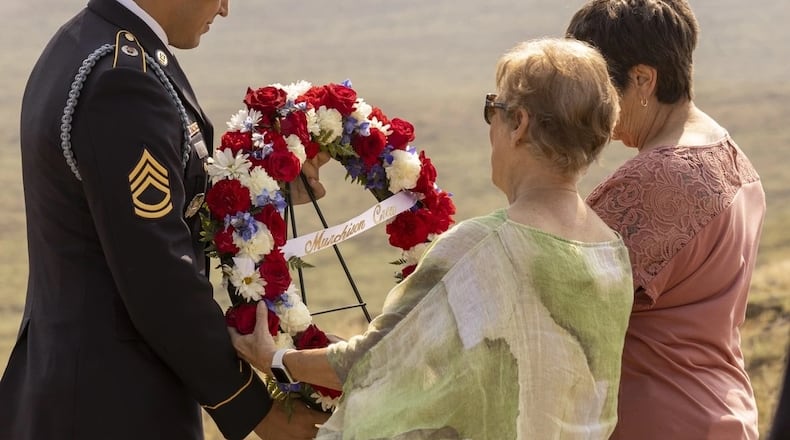In the summer of 1943, Dickson was assigned to the 328th Bombardment Squadron (Heavy), 93rd Bombardment Group (Heavy), 9th Air Force, according to the agency’s account of Dickson’s service.
On Aug. 1, 1943, the B-24 Liberator bomber on which Dickson was a gunner and instructor was hit by enemy anti-aircraft fire and crashed during Operation Tidal Wave, the largest bombing mission against the oil fields and refineries at Ploiesti, near Bucharest, Romania.
His remains were not immediately identified following the war, the agency noted.
Still, Dickson’s unidentified remains were buried among other “unknowns” in the Hero Section of the Civilian and Military Cemetery of Bolovan, Ploiesti, Prahova, Romania.
Following the war, the American Graves Registration Command, the organization that searched for and recovered fallen American personnel, disinterred all American remains from the Bolovan Cemetery for identification. The command was unable to identify more than 80 unknowns from the cemetery, and those remains were permanently interred at Ardennes American Cemetery and Henri-Chapelle American Cemetery, both in Belgium.
The DPAA began exhuming unknowns believed to be associated with airmen who flew in Operation Tidal Wave in 2017. These remains were sent to the DPAA Laboratory at Offutt Air Force Base, Nebraska, for examination and identification.
To identify Dickson’s remains, scientists used anthropological analysis, as well as circumstantial evidence. Scientists from the Armed Forces Medical Examiner System relied on DNA analysis.
Dickson’s name is recorded on the Tablets of the Missing at the Florence American Cemetery, an American Battle Monuments Commission site in Impruneta, Italy, with others still missing from WWII. A rosette will be placed next to his name to indicate he has been accounted for, the agency said.
Dickson will be buried in Arlington National Cemetery on a date yet to be determined. Arlington will be his third resting place.
About the Author



